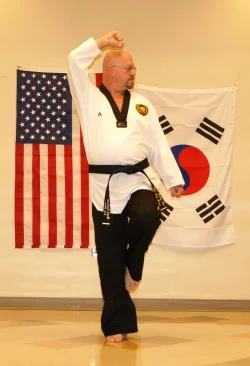There are some good Goju people here. Feel free to ask anything you want. We may not have all the answers but we can probably offer a reasonable opinion.Thanks for the explanation. As a relatively newer Goju Ryu student, I'm often too embarrassed to ask about these things.
Navigation
Install the app
How to install the app on iOS
Follow along with the video below to see how to install our site as a web app on your home screen.
Note: This feature may not be available in some browsers.
More options
Style variation
You are using an out of date browser. It may not display this or other websites correctly.
You should upgrade or use an alternative browser.
You should upgrade or use an alternative browser.
When do you correct Kata?
- Thread starter K-man
- Start date
should you try to correct a kata that someone outside your school but in the same system is doing? I think this might be a tricky situation but I might ask why it was being done the way the person is doing it and why the changes
Thanks for the explanation. As a relatively newer Goju Ryu student, I'm often too embarrassed to ask about these things.

Why? If you've got 30 years in an art, then it might conceivably be embarrassing to not know historic details, but as a noob, it should be taken for granted that you don't know any of these things.
should you try to correct a kata that someone outside your school but in the same system is doing? I think this might be a tricky situation but I might ask why it was being done the way the person is doing it and why the changes
I don't think so, no. You're not their teacher. As you say, I might ask questions, but I also know that the answer is likely to be "because that's how my teacher wants it done". I'd be more likely to ask their teacher, if I had the chance, but even then the answer may well be the same.
Here's an example. In the TKD yudanja form Keumgang, a crane stance with a diamond low block is done several times.

In the KKW version of this for, the leg is drawn up quickly while the blocks are performed slowly. In some schools, students are taught to squat before rising up to the cane stance. In our school, the foot rises slowly, reaching the final position at the same time as the hands.
My understanding is that the reason for doing the blocks slowly is to force the student to hold the crane stance longer, as a balance exercise. (Part of the meaning of "keumgang" is "immovable" and balance is one of the things we must perfect if we're to be immovable.) My KJN believes the balance exercise is made more effective if the foot moves slowly, since the more body parts moving, the more difficult maintaining balance is.
I practice it his way and the KKW way, and while discussion is always welcome, I'm not likely to accept correction from random people.
donald1
Senior Master
@kodora81
i ask questions in my goju class every day and occasionally throw one or two here
there's nothing wrong with being new everyone is new at some point. And besides if you don't ask, how will you learn them?
In my opinion there's no such thing as a question you can't learn from. If it's a good question you'll get a good answer and if it's not you'll learn from that too
i ask questions in my goju class every day and occasionally throw one or two here
there's nothing wrong with being new everyone is new at some point. And besides if you don't ask, how will you learn them?
In my opinion there's no such thing as a question you can't learn from. If it's a good question you'll get a good answer and if it's not you'll learn from that too
Last edited:
